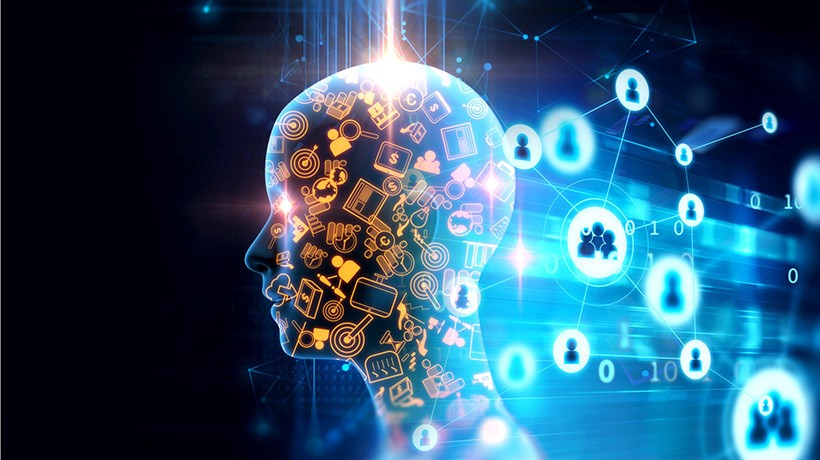AI Technology In The Field Of Education
Advancements in Artificial Intelligence (AI) technology are revolutionizing the way we live. Every day we hear about new self-driving cars, robots, or some other life-changing technology. However, in no other field does AI have as many potential applications as in the field of education. Even though there are still challenges that need to be overcome, we can say with certainty that AI has the potential to solve most problems faced by educators today.
The Big Picture
In the past decade, the effectiveness of traditional education has been repeatedly questioned. College dropout rates are at an all-time high, which is a testament to disinterested students and the low morale of the student body. According to industry experts, the main reason behind the schools’ failure to keep students interested is the “one-size-fits-all” methodology.
Fortunately, the developments in AI technology have already been fruitful. Various startups have come up with tools to make the learning process more fun. This is largely achieved by creating a personalized learning experience based on students' abilities and preferences. Currently, available tools are still falling short of industry expectations, but the early steps look promising. Innovative learning products can increase students’ enthusiasm and make them more likely to see their education through till the end. It can also help administrators track each student's progress and use a personalized approach for each student.
By analyzing students’ track records, AI solutions can detect their preferences and abilities. Teachers and study administrators can use this data to suggest personalized learning methods. AI can detect when students struggle with some tasks or concepts and help them get additional tutoring. It can also recognize students who can handle normal assignments easily and assign them extra work. In both cases, AI technology can keep children engaged by adjusting their workload. Interventions, like the ones described above, can help children attain their peak mental performance.
To raise the effectiveness of AI technology, the software must be trained on large sets of data. To ensure the ethical collection of data, administrators must inform the students about the fact. They also need to explain how the data is going to be used.
Privacy Concerns
Before we can utilize the full potential of AI for personalized learning, we need to ensure that the data collection methods are safe, secure, and transparent. As previously mentioned, most of the educators’ problems can be solved by AI. To do this, AI solutions need to be fed large volumes of student data.
The problem is, modern students are aware of the risks of exposing their personal data, so they need to be assured that their data will be kept safe. Their personal information must be stored in a place where it’ll be safe from hacker attacks. As long as educational institutions can maintain high data collection standards, the potential for AI to improve the quality of learning could be limitless. Fortunately, many organizations around the world are working to ensure the privacy of students' data. NGOs work to make sure that data collection happens responsibly and with the students’ consent.
Chatbots’ Potential
Universities can use AI-powered chatbots to guide students through their initial adaptation period. For instance, students can ask questions about their program, campus, and other study-related concerns. Chatbots can be a valuable source of accurate information, especially when the staff is unavailable.
Bots are easy to implement and do not require any modification of the workforce. Universities can monitor students’ inquiries to find out about interests and the most common issues. By addressing students’ needs, the universities can make students more enthusiastic to learn. These days, most institutions use chatbots to provide answers any time of the day and any day of the week. Automated Q/A tools can help professors manage their time efficiently. Tools can answer students’ repetitive questions and free up professors’ time to focus on personal interaction and furthering their studies.
Chatbots can also be invaluable for managing students’ mental well-being and motivation. On-campus medical facilities are often too busy to help students on time. This is especially true for mental health issues, which are often overlooked. Universities can solve these problems by using AI-powered chatbots that track users’ mental health. These tools are always available and can provide basic mental health assistance until trained professionals become available. Once again, universities must be very careful when dealing with sensitive mental health data. In the best-case scenario, chatbots should be superintended by mental health professionals.
Challenges For The Future
AI-powered tools may seem like a simple solution to all the problems, but the reality is more complex. Schools need to have a plan to address many of the challenges that might arise during the implementation process. One of the biggest challenges lies in introducing the tools seamlessly so that they don’t disrupt students’ natural work habits.
Students should be informed about the limits and capabilities of AI. It’s true that in the future, robots will most likely perform the most repetitive tasks, but the tasks that require emotional intelligence and personal touch will still need to be performed by humans. Some universities focus on teaching archaic skills while neglecting to prepare students for the near future.
There’s no question that AI will play an important role in improving the quality of education. We must also not forget about the valuable input of humans. As a society, we’ll have to use technology to complement human teachers’ efforts, not to replace them. For instance, grading algorithms can increase teachers’ efficiency, but the software still requires human oversight. Instead, AI software should be heavily utilized for teaching rule-based subjects like maths and foreign languages.
Conclusion
AI already plays an important role in the development of personalized learning tools, and as time passes, its role is only going to increase. AI vendors have the potential to streamline educational institutions and raise the value of formal education. The introduction of AI technology will only increase the teacher’s role in the everyday learning process. As long as learning administrators can ensure the safety of students’ data, there are no downsides to utilizing the technology.









